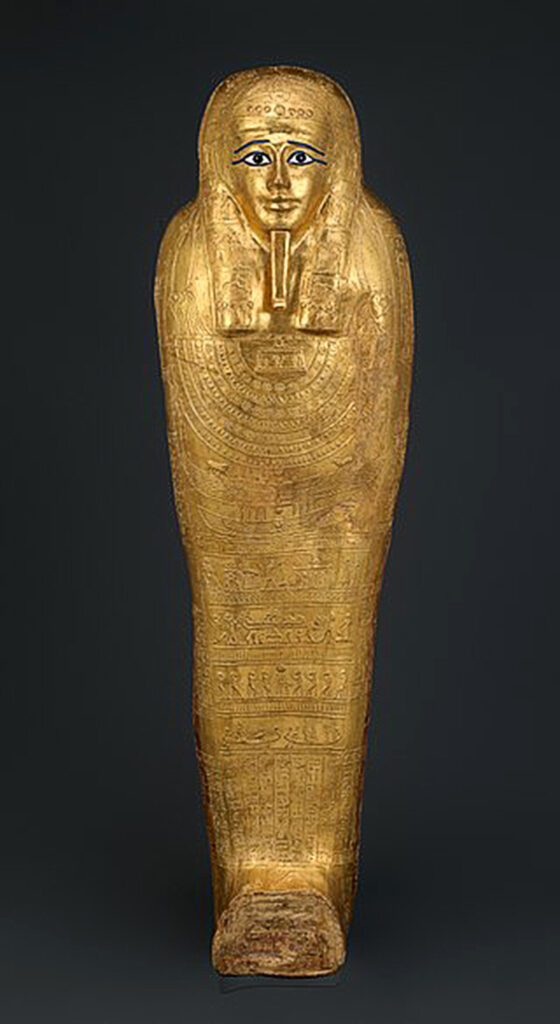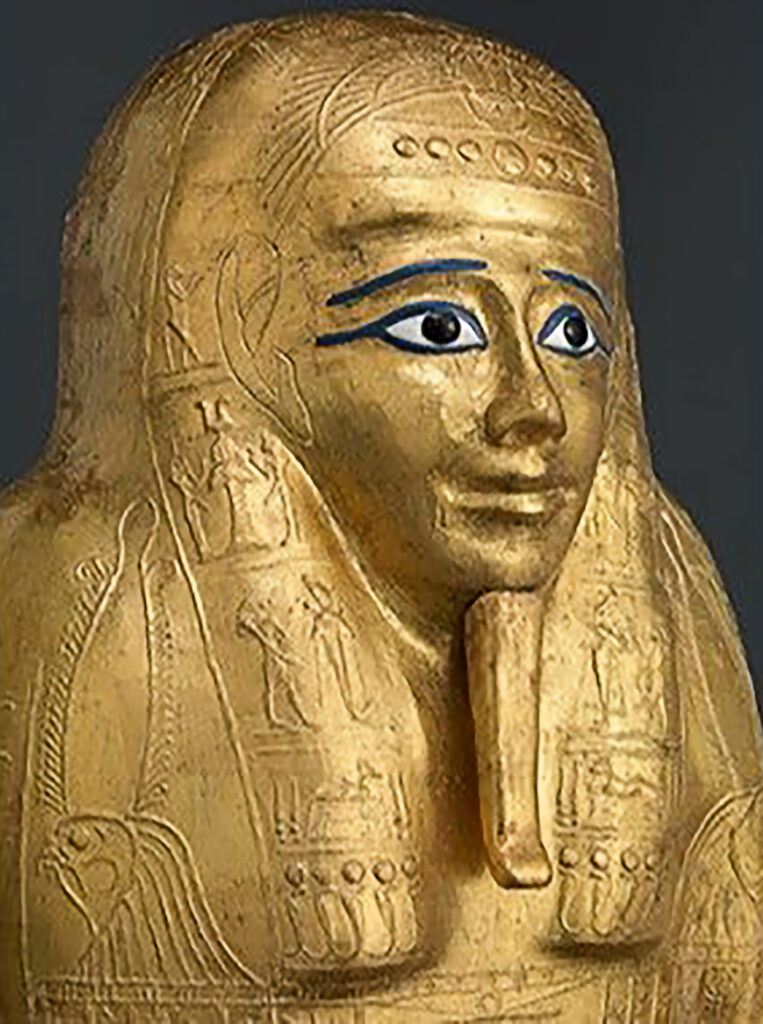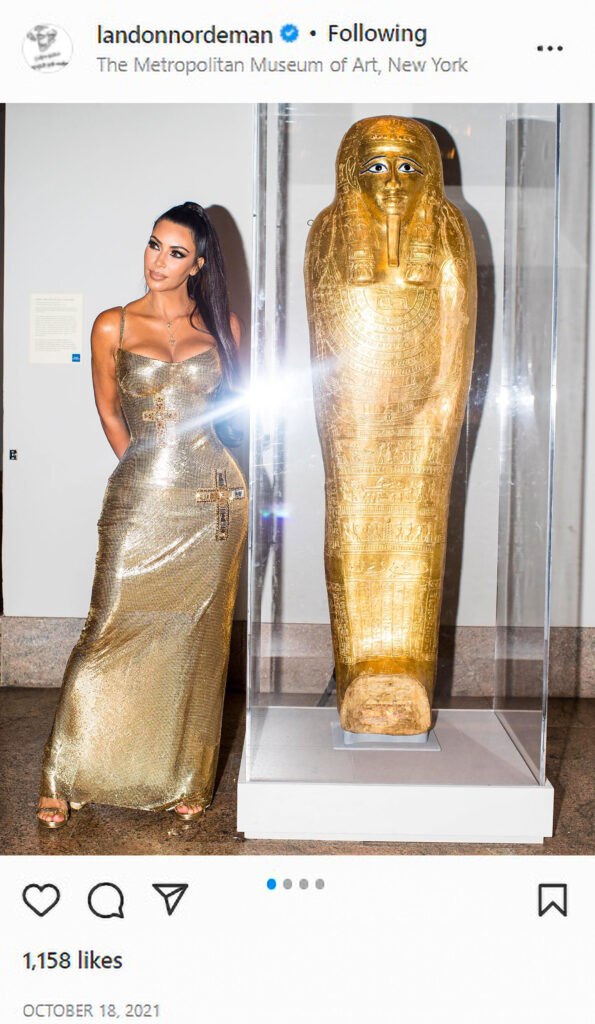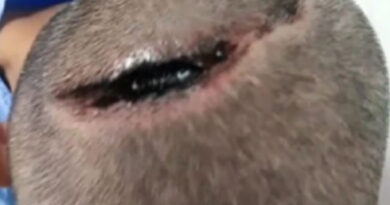Mystery Over Stolen Egyptian Sarcophagus Made Of Gold And Sold To Metropolitan Museum Of Art In NYC Solved In Hamburg
The mystery surrounding a stolen ancient golden Egyptian sarcophagus that was sold to the Metropolitan Museum of Art in New York City using forged export documents has been solved with the arrest of a German citizen in Hamburg.
The Metropolitan Museum of Art in New York has since returned the golden, jewel-studded sarcophagus, which dates back to the 1st century BC, to Egypt after it was stolen in the 2011 Egyptian Revolution during the Arab Spring, when tomb raiders plundered the resting place of a high-ranking priest called Nedjemankh.
After its theft, forged export documents allowed for the priceless historical artefact to leave the country before it was then sold to the Met via French antique dealers for nearly USD 4 million (GBP 3.04 million).

The American celebrity Kim Kardashian, 41, famously posed next to the sarcophagus during a gala.
The sale of the artefact raised suspicions with US public prosecutors, who investigated the sale, with the Federal Bureau of Investigation (FBI) working with French authorities.
This first led to the arrest of two people in southern France, who have been named only as Christophe K. and Richard S.
And now the authorities have arrested a 42-year-old German-Lebanese, Hamburg-based antique dealer from the Harvestehude quarter in the northern German city, who has been named only as Roben D.
Roben D. is suspected of having played a key role in the illegal sale of the stolen historical artefact. The suspect was arrested at Hamburg International Airport after an EU arrest warrant was issued by French judge Jean-Michel Gentil.
A German Chief Public Prosecutor named as Liddy Oechtering said: “The accused was extradited to the French authorities on 14th March. In particular, we accuse him of commercial fraud and receiving stolen goods. It’s about trading in cultural assets.”

The investigation had been ongoing since 2019, which is the same year that the Met returned the sarcophagus to Egypt, with the FBI handing over data to the French and German authorities to assist them in their investigations.
The 42-year-old Hamburg-based suspect is currently being held by authorities in the French capital Paris, with the authorities also reportedly suspecting him of having illegally sold five other historical artefacts to the Louvre Art Museum in Abu Dhabi said to be worth approximately EUR 50 million (USD 54.8 million; GBP 41.6 million).
Nedjemankh was an Egyptian priest who died in the 1st century BC in the ancient city of Herakleopolis Magna. The sarcophagus, covered in gold and measuring 1.81 metres (5’11”) in height, is also adorned with silver and jewels.
The inside of the sarcophagus is adorned with representations of the ancient Egyptian goddess Nut, the goddess of the sky and heavens.
At the time of its purchase, the Met in New York had understood that the statue had been exported from Egypt in 1971 with a valid licence, as the country had allowed for some of its antiques to leave its territory after a change in policy in 1983. But it turned out that the documentation had been forged.
The sarcophagus was returned to Egypt in 2019, where it was prominently displayed. At the time of its acquisition, the Met had said in a statement that it had “acquired an ancient Egyptian gilded cartonnage coffin from the first century B.C.

“The highly ornamented lid of the coffin is displayed prominently in the Museum’s Lila Acheson Wallace Galleries for Egyptian Art (gallery 138), where it will be seen and enjoyed by millions of visitors.”
And Daniel H. Weiss, President and CEO of The Met had been quoted in the statement as saying: “It is an extraordinary work of art that will give our visitors the opportunity to appreciate a fascinating period of Egyptian history.”



